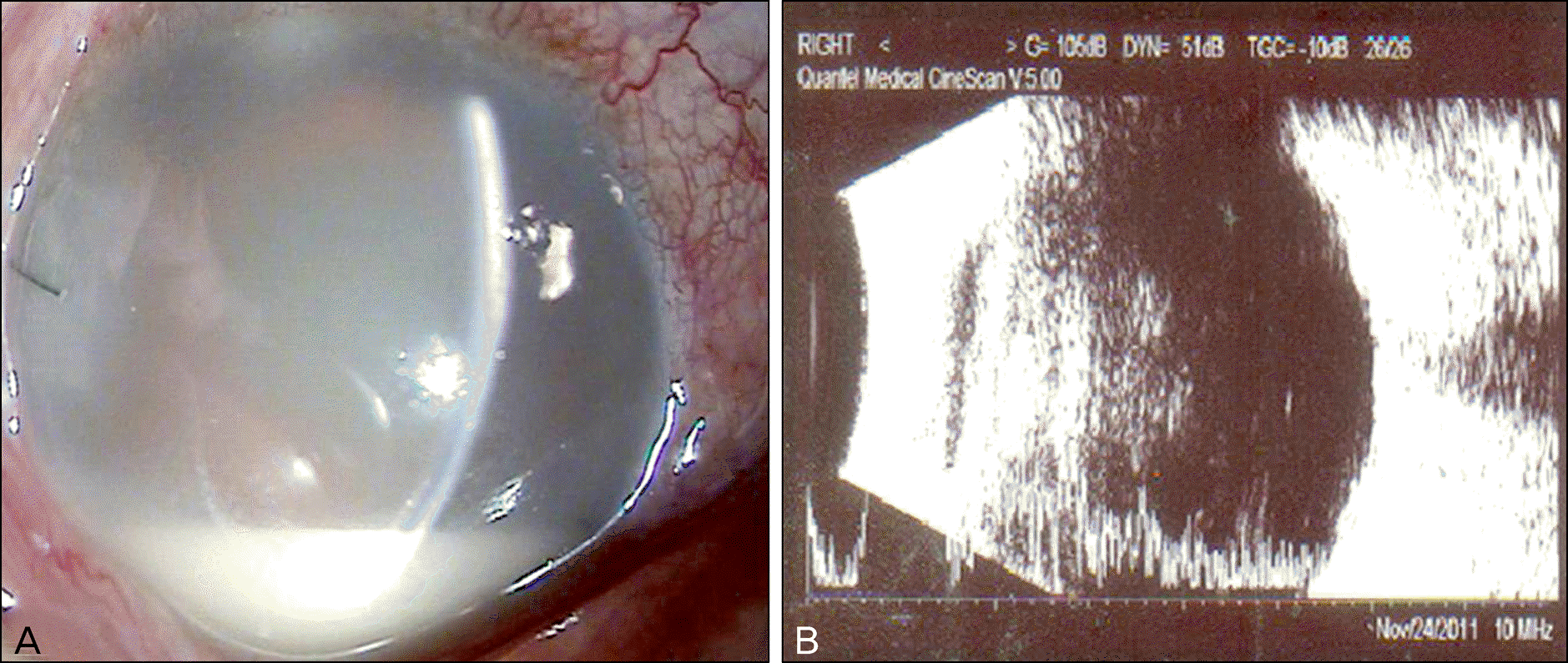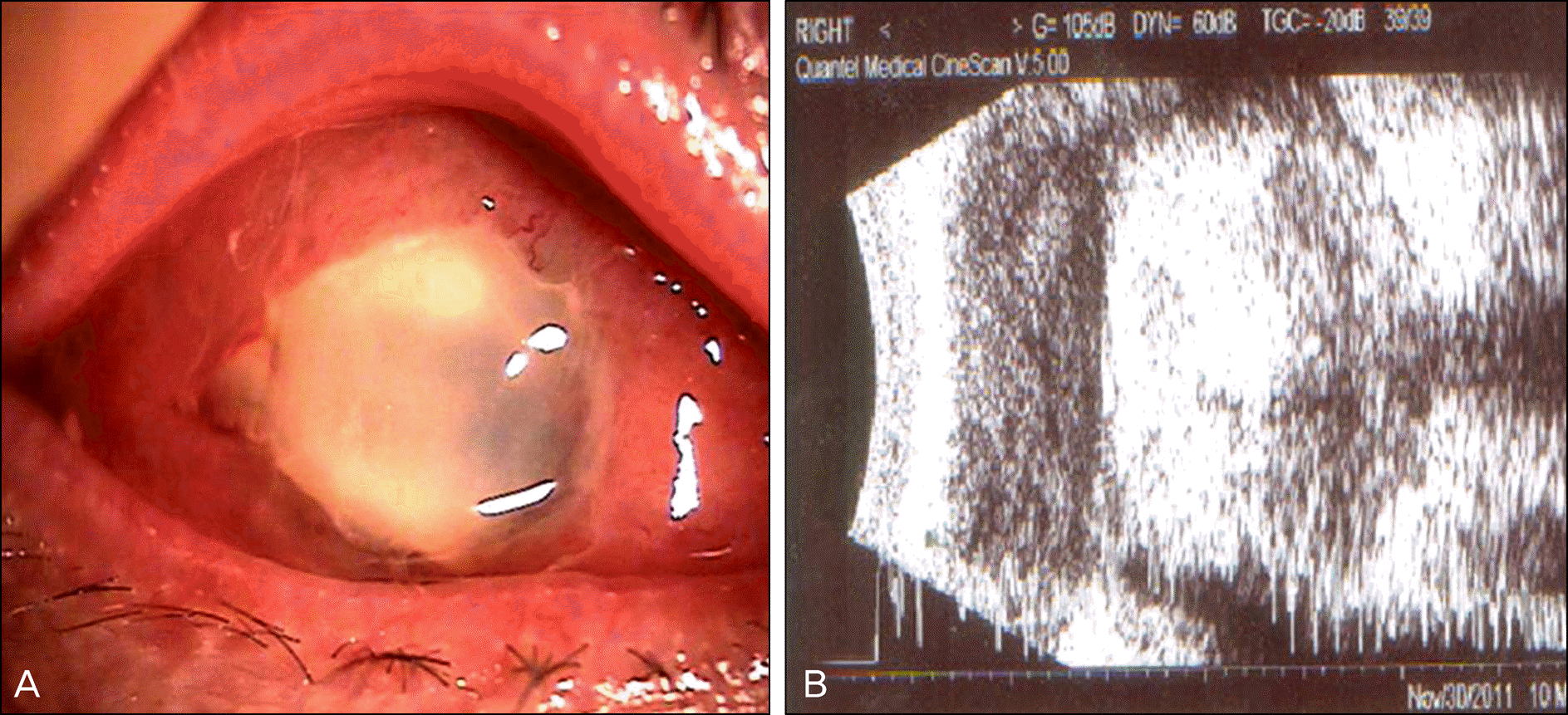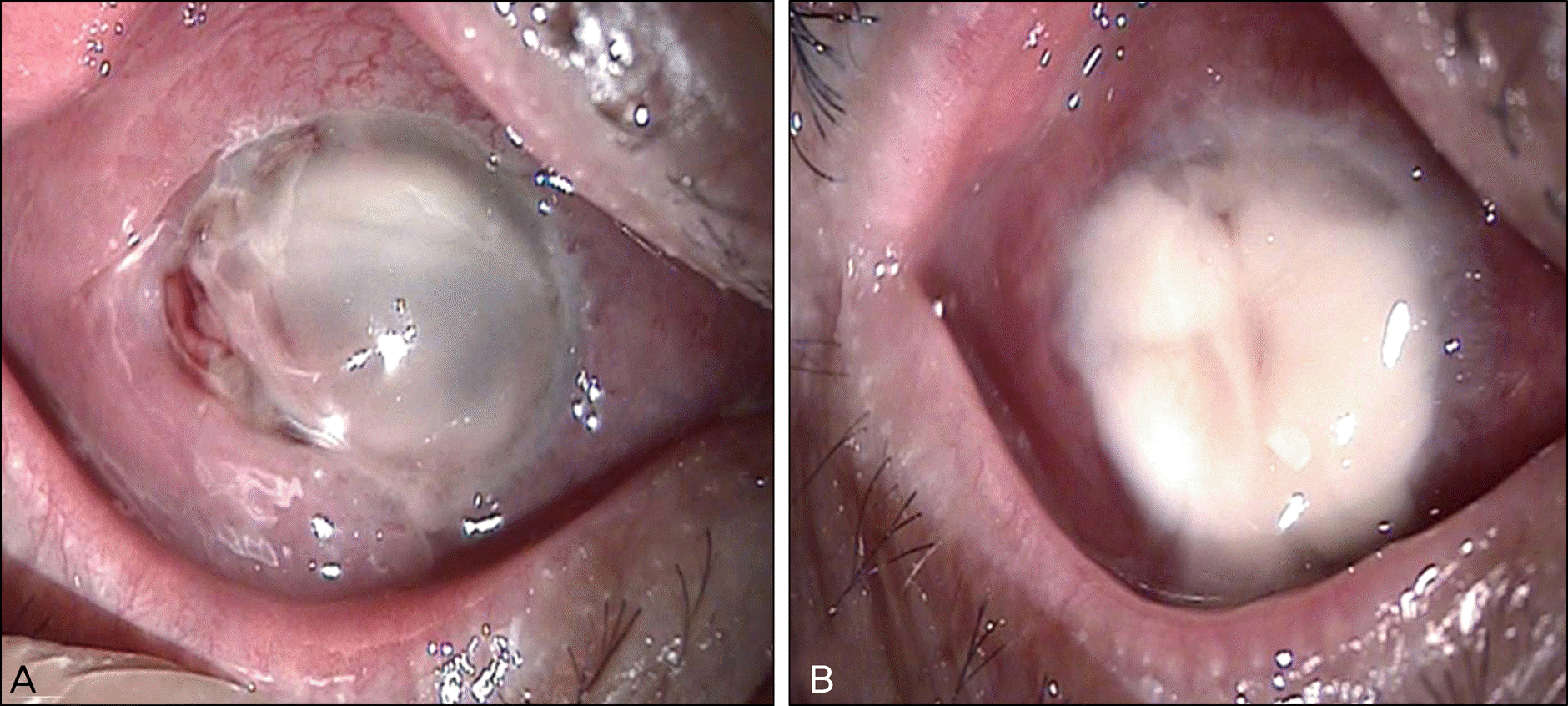Abstract
Purpose
To report a case of Serratia marcescens endophthalmitis following phacoemulsification and posterior chamber intraocular lens implantation.
Case summary
A 64-year-old male with a history of diabetes, hypertension, cardiovascular disease was referred with right ocular pain and reduced vision 1 day after cataract surgery. On admission, hypopyon on anterior chamber by slit lamp examination and anterior vitreous was hazy according to ultrasonography. We immediately performed intravitreal antibiotics injection and microbiological analysis of anterior chamber and vitreous samples was performed. On day 3, persistent cornea stormal infiltration and cornea perforation were visible and the organism was identified as S. marsescens. Despite appropriate antibiotic treatment the eye continued to deteriorate.
Go to : 
References
2. Shrader SK, Bank JD, Lauter CB, Murphy P. The clinical spectrum of endophthalmitis: incidence, predisposing factor, and features in-fluencing outcome. J Infect Dis. 1990; 162:115–20.
3. Gaughran ER. From supersitition to science: the history of a bacterium. Trans NY Acad Sci. 1969; 31:3–24.
4. Equi RA, Green WR. Endogenous Serratia marcescens endophthalmitis with dark hypopyon: a case report and review. Surv Ophthalmol. 2001; 46:259–68.
5. Jonson DH, Klein NC, Cunha BA. Postoperative Serratia marcescens endophthalmitis. Heart Lung. 1992; 21:300–2.
6. Shaarawy A, Meredith TA, Kincaid M. . Intraocular injection of ceftazidime. Retina. 1995; 15:433–8.

7. Endophthalmitis Vitrectomy Study Group. Results of the Endophthalmitis Vitrectomy Study: a randomized trial of immediate vitrectomy and intravenous antibiotics for the treatment of postoperative bacterial endophthalmitis. Arch Ophthalmol. 1995; 113:1479–96.
8. Alexandrakis G, Alfonso EC, Milller D. Shifting trends in bacterial keratitis in south Florida and emergind resistance to fluoroquinolones. Ophthalmology. 2000; 107:1497–502.
9. Lee SH, Woo SJ, Park JH. . Serratia marcescens endophthalmitis associated with intravitreal injections of bevacizumab. Eye (Lond). 2010; 24:226–32.

10. al hazzaa SA, Tabbara KF, Gammon JA. Pink hypopyon: a sign of Serratia marcescens endophthalmitis. Br J Ophthalmol. 1992; 76:764–5.

11. Lyerly D, Gray L, Kreger A. Characterization of rabbit corneal damage produced by Serratia keratitis and by a serratia perotease. Infect Immun. 1981; 33:927–32.
12. Choi SH, Kim YS, Chung JW. . Serratia bacteremia in a large university hospital: trends in antibiotic resistance during 10 years and implications for antibiotic use. Infect Control Hosp Epidemiolo. 2002; 23:740–7.
Go to : 
 | Figure 1.Photograph at the first visit. (A) Cornea was clear and sutured clear cornea incision was seen at temoral side of the right eye but severe flare and hypopyon in anterior chamber. (B) Ultrasonograph shows heterogenous vitreous opacity. |




 PDF
PDF ePub
ePub Citation
Citation Print
Print




 XML Download
XML Download